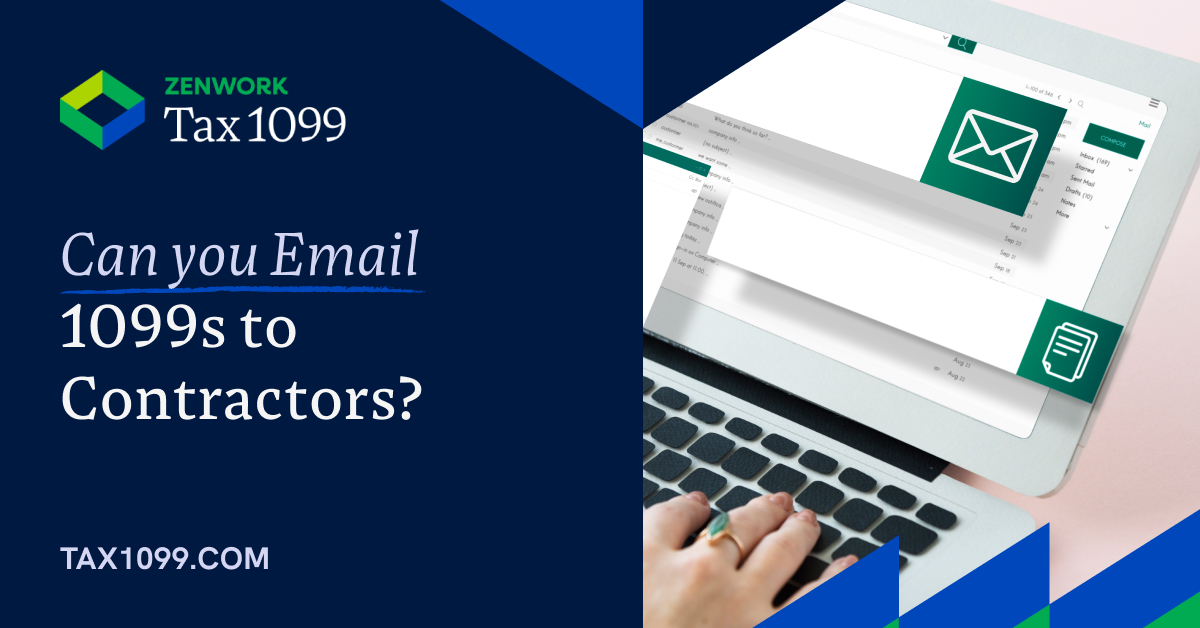If you’re going to send a contractor a 1099 and are wondering if you may send it by email legally? The Internal Revenue Service (IRS) does, in fact, permit the emailing of 1099 forms, but careful instructions must be followed to ensure adherence to federal laws. This is a comprehensive guide to the process that addresses important details such as when to send contractors a 1099, how to create one, and how to safeguard the form while it is being delivered.
When Should I Send Contractors a 1099 Form?
If you have paid a contractor $600 or more for services provided during the tax year, you must file a 1099 on the contractor’s behalf. Payments to freelancers, independent contractors, and other non-employees fall under this category. To ensure that the contractor has the data required to file their taxes on time, you must send the 1099 form by the end of January of the subsequent tax year.
How to Send 1099 Forms to Contractors?
Accurate information collection, including the contractor’s name, address, and Taxpayer Identification Number (TIN), is the first step in issuing 1099 to contractors. After obtaining this information, you can use accounting software, IRS-approved tax filing software, or hand-fill out the form to generate a 1099 for the contractor.
You can choose between paper delivery and electronic delivery when sending the form. You must follow the IRS guidelines of 1099 e-filing and tax form delivery methods if you choose to use electronic delivery.
IRS Guidelines for Emailing 1099 Forms
The IRS allows contractors to receive 1099 forms via email if they consent to receive the form in this format. Before sending out the form you must have the contractor’s consent. The consent needs to be acquired in a manner that indicates the contractor can access the form in the format you intend to send it in, such as through a secure portal or email.
Electronic Consent for 1099 and 1099-MISC Delivery
The contractor should be informed of their right to revoke consent at any time and the steps involved in doing so as part of the electronic consent process. After electronic consent is granted, you can email 1099-NEC or 1099-MISC, but you must ensure the form is sent in a printable, easily accessible format, like PDF.
Secure Email for Tax Forms
When emailing 1099 forms, information protection is crucial because they contain sensitive data, such as tax identification numbers and Social Security numbers. It is essential that you ensure a secure transfer of the form. To protect information during transfer, this often involves encryption or secure email services. The importance of data security when delivering tax forms online is also highlighted in IRS guidelines for 1099.
Delivery Methods for Tax Forms and 1099 e-Filing Method
You have additional options for delivery in addition to emailing 1099 forms, like postal mail or secure portals. But since electronic delivery of 1099 is frequently quicker, more efficient, and more affordable, a lot of businesses choose it. Use the IRS’s Information Returns Intake System (IRIS) or the Filing Information Returns Electronically (FIRE) system, that allows 1099 form e-filing if you are sending contractors multiple 1099 forms. Beginning in 2024, companies filing 10 or more 1099s must do so electronically.
Final Thoughts
It concludes that the tax reporting process can be streamlined by providing contractors with 1099 forms, especially when they are delivered electronically. However, it is essential to stick to the correct procedures. Obtain 1909-NEC or 1099-MISC electronic consent, ensure that 1099 forms are properly encrypted, and follow IRS regulations to deliver contractor tax forms securely and on time. For smooth operations and accurate contractor compensation reporting, complying with tax regulations is crucial, regardless of how you choose to file 1099 electronically, by mail, or via email.



